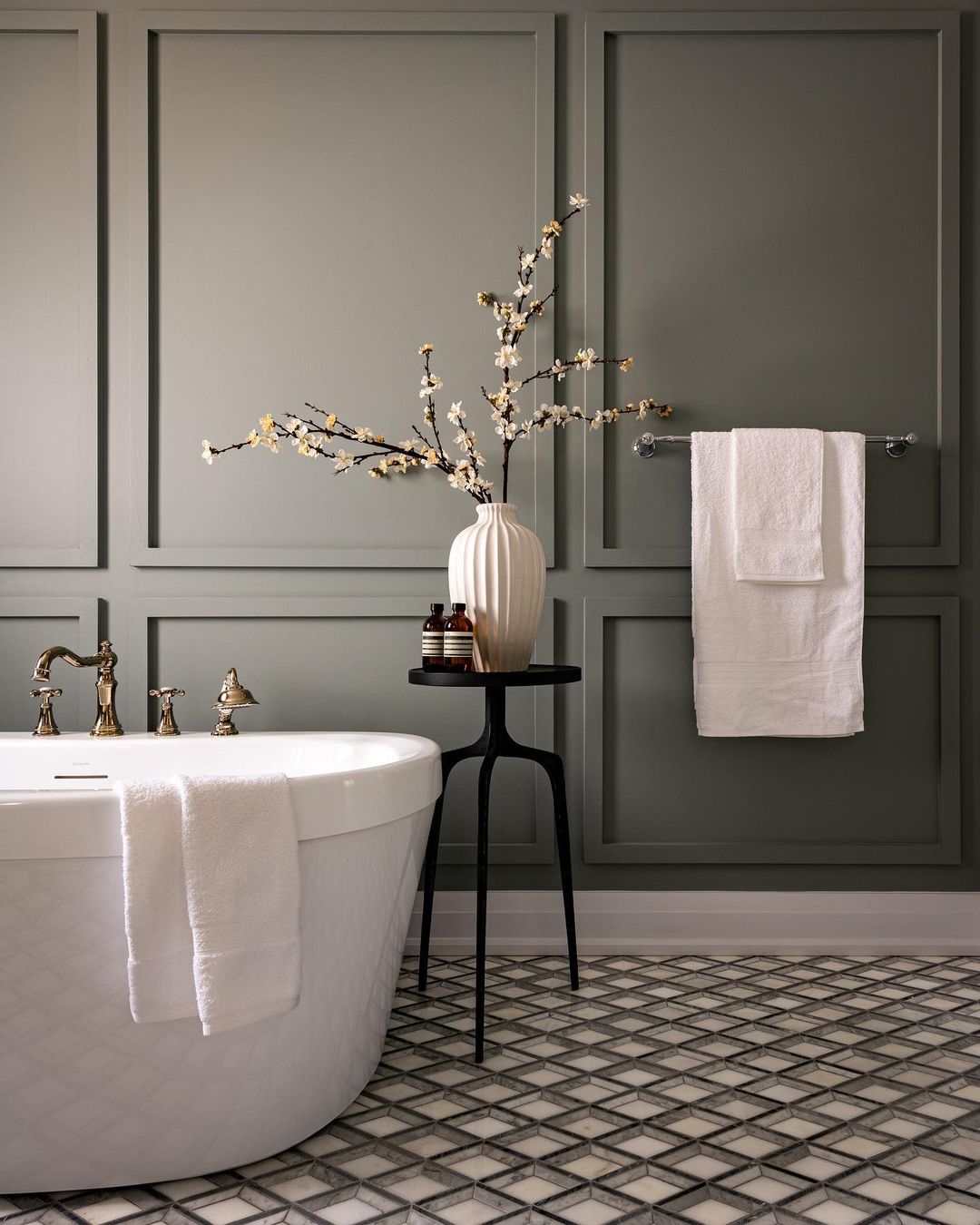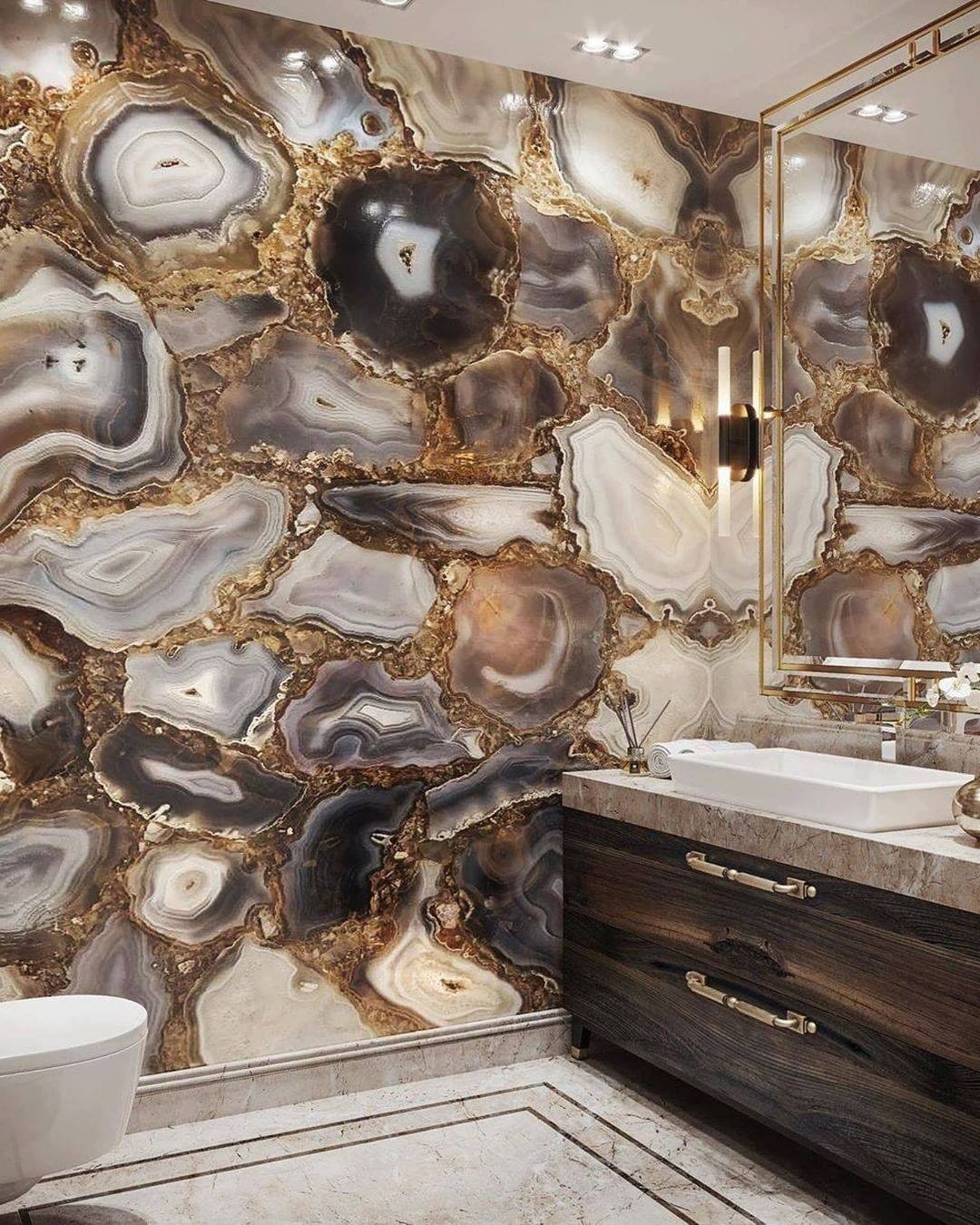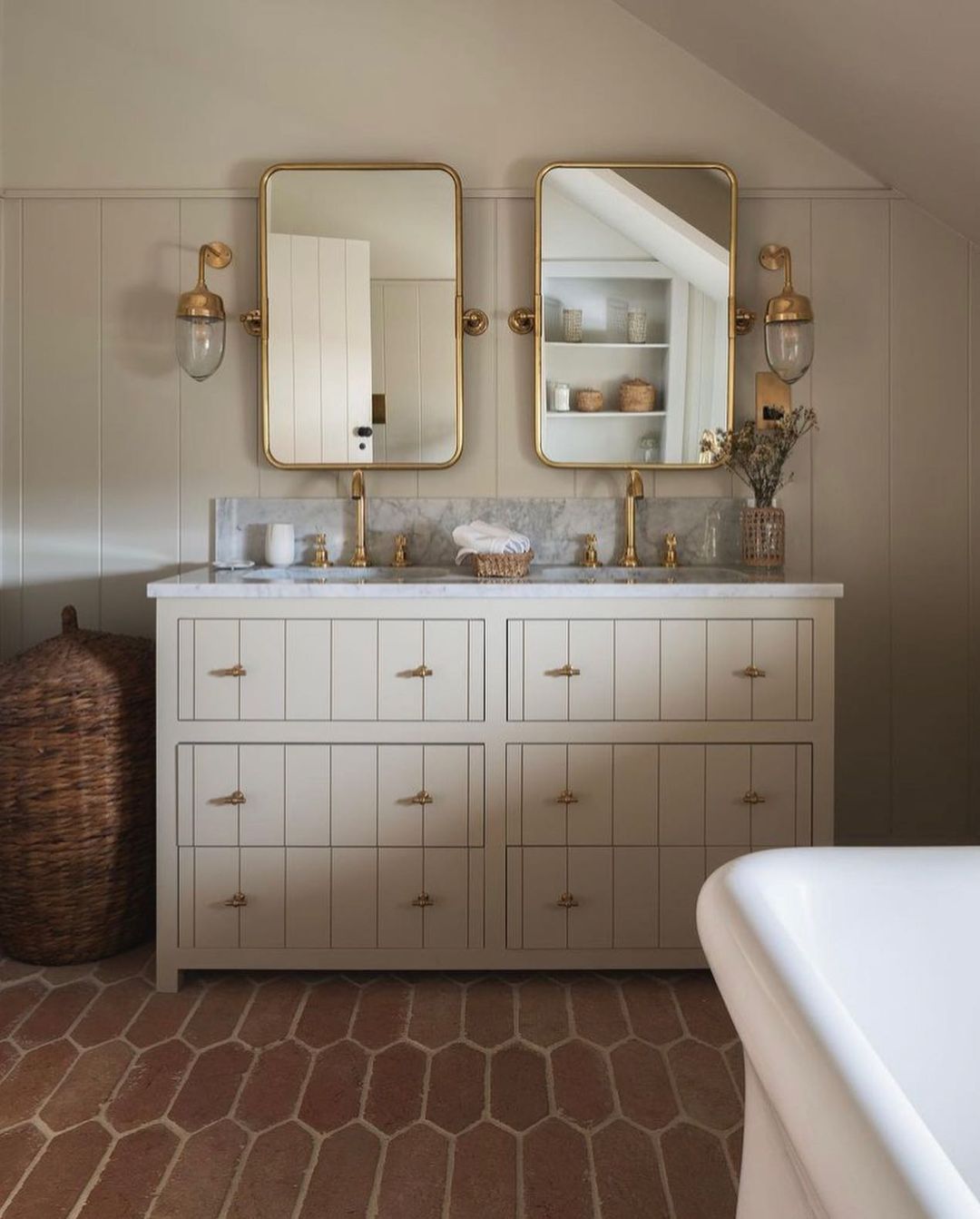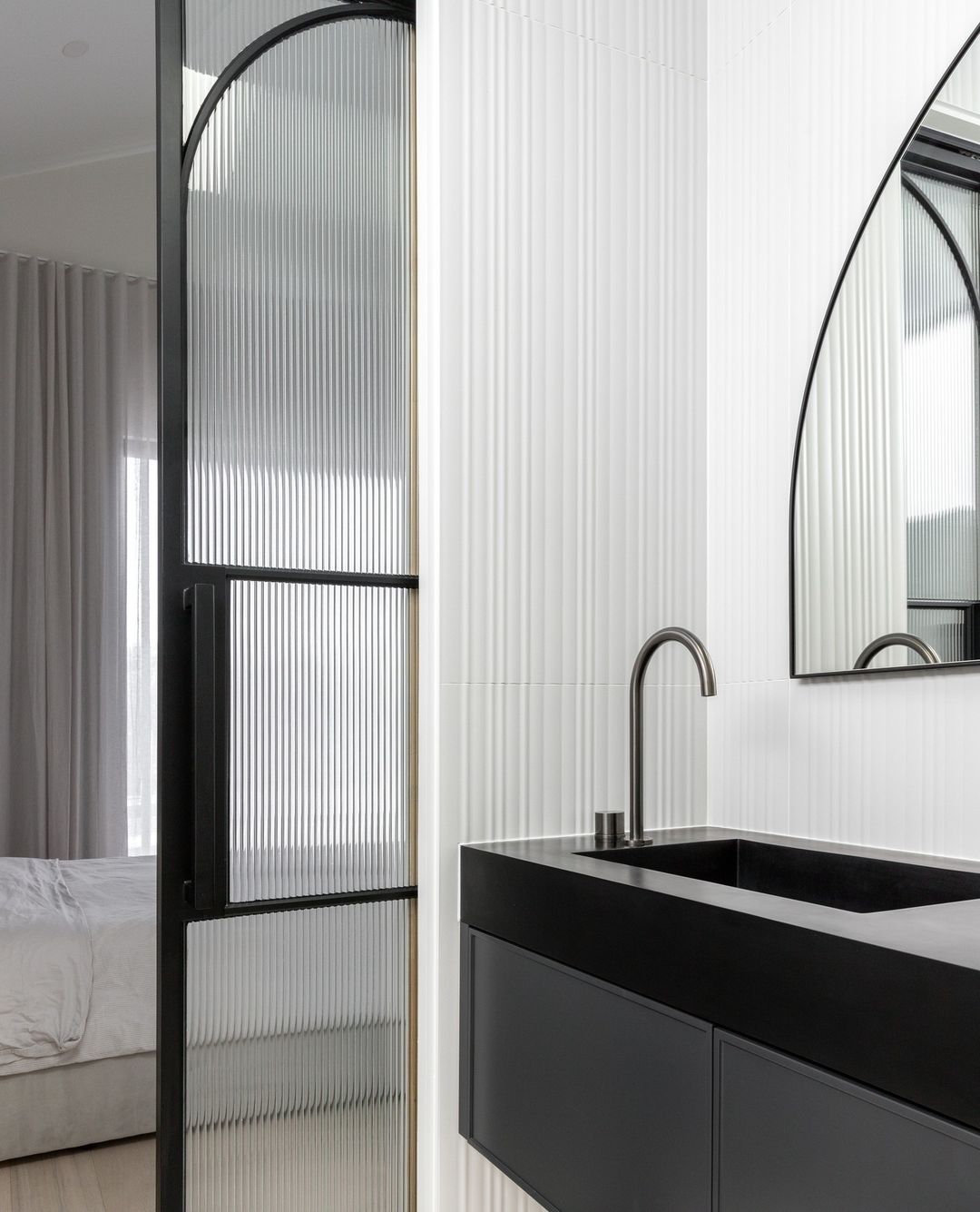Step into a world of timeless elegance and sophistication as we embark on a journey to explore the captivating realm of Art Deco bathrooms. Originating in the 1920s and 1930s, Art Deco, derived from the French term “Arts Décoratifs,” encompassed various forms of art and design, including architecture, interior design, fashion, and visual arts. The movement flourished during the interwar period, following the aftermath of World War I, when society longed for a departure from the somber and restrained aesthetic that prevailed during the war years. Art Deco represented a fresh start, embracing a spirit of exuberance, optimism, and progress.
In this article, we delve into the world of Art Deco bathrooms, shedding light on the key characteristics, features, and tips that define this iconic style. From luxurious fixtures and fittings to distinctive color palettes and lighting choices, we’ll unravel some secret tips for creating a bathroom that encapsulates the spirit of Art Deco.
Art Deco Style Unveiled: A Comprehensive Overview of its Timeless Elegance and Design Elements

With its timeless elegance and distinctive design elements, Art Deco has left an indelible mark on the history of aesthetics. In this comprehensive overview, we invite you to explore the allure of Art Deco and uncover the secrets behind its enduring popularity.
Exploring Key Characteristics and Distinctive Style
Art Deco is a design movement that captivated the world with its timeless elegance and distinctive aesthetic. Characterized by its geometric shapes, luxurious materials, and bold ornamentation, Art Deco represents an era of glamour, sophistication, and innovation.
Emphasis on Geometric Forms
One of the key characteristics of the Art Deco style is its emphasis on geometric forms. Straight lines, sharp angles, and symmetrical patterns dominate the design elements, reflecting the machine age and the influence of industrial progress. These geometric motifs can be seen in architectural structures, furniture designs, and decorative arts of the period. From the sleek lines of skyscrapers to the intricate patterns adorning jewelry, Art Deco embraces geometric precision.
Use of Luxurious Materials
Luxurious materials play a vital role in defining Art Deco aesthetics. The movement embraced the use of opulent materials such as exotic woods, polished metals like chrome and stainless steel, gleaming mirrors, and richly colored stones. These sumptuous materials were combined to create exquisite pieces of furniture, decorative objects, and architectural elements that exuded a sense of opulence and sophistication.

The Dawn of Art Deco: Exploring Its Emergence in the Early 20th Century
In the early 20th century, as the world awakened from the slumber of tradition, a new artistic movement emerged, captivating hearts and minds with its irresistible allure. Art Deco burst onto the scene, like a radiant sun breaking through a gray sky, transforming the landscape of design forever.
Born amidst the backdrop of a rapidly changing world, Art Deco embodied the spirit of progress and the yearning for a brighter future. It was a response to the tumultuous transition from the ornate and intricate Art Nouveau style to a world propelled by technology and industrialization.
From the bustling streets of Paris to the gleaming skyscrapers of New York City, Art Deco spread its wings, embracing the dynamism and energy of the modern age. It drew inspiration from a melting pot of influences, blending the elegance of ancient civilizations, the sleekness of machinery, and the audacity of the avant-garde.
The Influence of Art Deco on Bathroom Design During Its Era
Art Deco bathrooms often incorporated statement pieces that served both functional and decorative purposes. Freestanding bathtubs with sleek, streamlined shapes became a popular choice, showcasing the movement’s love for modernity. Ornate vanity units featuring geometric patterns and luxurious materials provided storage and served as focal points. Elaborated light fixtures with geometric designs, often made of glass or chrome, added a touch of glamour and illuminated the space with a warm glow.
Color played a significant role in Art Deco bathroom design as well. While bathrooms were often decorated in a palette of bold and contrasting hues, black and white were particularly favored. A black and white checkerboard or geometric tile patterns adorned the floors, while white fixtures contrasted with black accents or vice versa. This monochromatic color scheme enhanced the sense of sophistication and created a striking visual impact.
Glamorous Allure: Delving into the Key Features of Art Deco Bathrooms

Step into a world of elegance and sophistication as we embark on a journey to explore the captivating realm of Art Deco bathrooms. These opulent spaces, born from the iconic Art Deco movement, offer a harmonious fusion of luxury, geometric precision, and timeless allure. From striking tile patterns to lavish fixtures and sumptuous materials, Art Deco bathrooms encapsulate the essence of glamour and create a truly unforgettable bathing experience.
Below key features collectively create an Art Deco bathroom that exudes elegance, glamour, and timeless appeal. The harmonious blend makes Art Deco bathrooms a truly captivating and memorable space.
Geometric Patterns

Art Deco embraces bold and symmetrical geometric patterns in bathroom design. Whether through tiled floors with checkered or stepped motifs, angular fixtures, or geometrically patterned wallpaper, these striking patterns create a sense of visual interest and precision.
Aristocratic Materials

The use of opulent materials is a hallmark of Art Deco bathrooms. Marble, granite, terrazzo, and other high-quality stones were commonly employed for flooring, countertops, and accents. Gleaming metals like chrome, brass, and nickel were favored for faucets, handles, and accessories, adding a touch of sophistication and glamour.
Statement Fixtures

Art Deco bathrooms often feature statement fixtures that serve as focal points. Freestanding bathtubs with sleek, streamlined shapes or intricate detailing became popular choices. Elaborate vanity units with geometric patterns, luxurious materials, and stylish mirrors such as oval mirrors that enhance the sense of grandeur and elegance.
Bold Color Schemes

Art Deco embraces contrasting color palettes to create a striking visual impact. Black and white combinations were frequently used, featuring checkerboard or geometric tile patterns on floors and walls. Other vibrant colors such as deep blues, rich greens, and bold reds were also incorporated to add drama and personality.
Ornate Details

Art Deco bathrooms showcase ornate details in their design elements. Intricate etchings and beveled edges on mirrors, decorative glasswork, and intricate hardware are common examples. These details reflect the movement’s dedication to craftsmanship and add a touch of refinement and luxury.
Streamlined Design

Art Deco emphasizes sleek and streamlined design, inspired by the era’s fascination with technological progress. The smooth curves, aerodynamic shapes, and clean lines of fixtures, furniture, and architectural elements give an overall sense of modernity and sophistication.
Crafting an Art Deco Masterpiece: Tips for Designing Your Dream Bathroom

Research and Gather Inspiration
- Familiarize yourself with the key characteristics and elements of Art Deco design.
- Explore online resources, books, magazines, and galleries to gather inspiration.
- Study iconic Art Deco buildings, interiors, and decorative arts for ideas.
Define Your Color Palette
- Choose a color scheme that aligns with the Art Deco style.
- Consider using bold and contrasting colors like black and white, deep blues, rich greens, or vibrant reds.
- Balance the colors to create a harmonious and visually striking effect.
Flooring and Walls
- Opt for geometric patterns on the floor, such as chevrons, sunbursts, or stepped designs.
- Consider using tiles in contrasting colors to create a dramatic impact.
- Explore options like marble, terrazzo, or mosaic tiles to add a touch of luxury.
- Use geometric wallpapers or wall panels with Art Deco motifs to enhance the visual appeal.
Fixtures and Fittings
- Select fixtures that have a sleek and streamlined design, reflecting the Art Deco era.
- Choose faucets, showerheads, and handles with geometric shapes or streamlined curves.
- Consider fixtures made of gleaming metals like chrome, brass, or nickel for added sophistication.
- Install a freestanding bathtub with clean lines or intricate detailing as a centerpiece.
- Opt for an Art Deco-style vanity unit with geometric patterns and luxurious materials.
Lighting and Mirrors
- Incorporate Art Deco-inspired light fixtures with geometric shapes or streamlined designs.
- Use frosted glass or etched glass shades to diffuse light and create an inviting ambiance.
- Install a statement mirror with an Art Deco frame, featuring intricate details or geometric patterns.
- Consider wall sconces or glamorous pendant lights to add an additional layer of sophistication.
Accessories and Decor
- Add Art Deco-inspired accessories like vases, sculptures, or decorative objects with geometric motifs.
- Include plush towels, rugs, and bathrobes in rich colors and luxurious materials.
- Display Art Deco artwork or prints that complement the overall aesthetic.
- Consider incorporating a vanity tray with vintage perfume bottles or an Art Deco-inspired clock.
Attention to Detail
- Pay close attention to small details, such as door handles, cabinet knobs, and towel holders.
- Ensure that all elements, from faucets to lighting, follow the Art Deco design language.
- Maintain a sense of symmetry and balance in the overall layout and placement of fixtures.
Elevating Bathing Spaces: The Lasting Charm of Art Deco Bathrooms
Throughout this article, we have explored the captivating world of Art Deco bathrooms and unraveled their key elements. With their enduring appeal, Art Deco bathrooms continue to inspire and captivate design enthusiasts, transcending the boundaries of time. The combination of patterns and different color schemes creates an unmatched ambiance of elegance and sophistication.
As you embark on your own bathroom design journey, we encourage you to consider incorporating Art Deco elements and tips as we’ve discussed, into your space. Let your imagination run wild, exploring the possibilities that this iconic style has to offer.
Unleash your inner designer and embrace Art Deco’s timeless charm in your own bathroom design. The transformation begins now.




